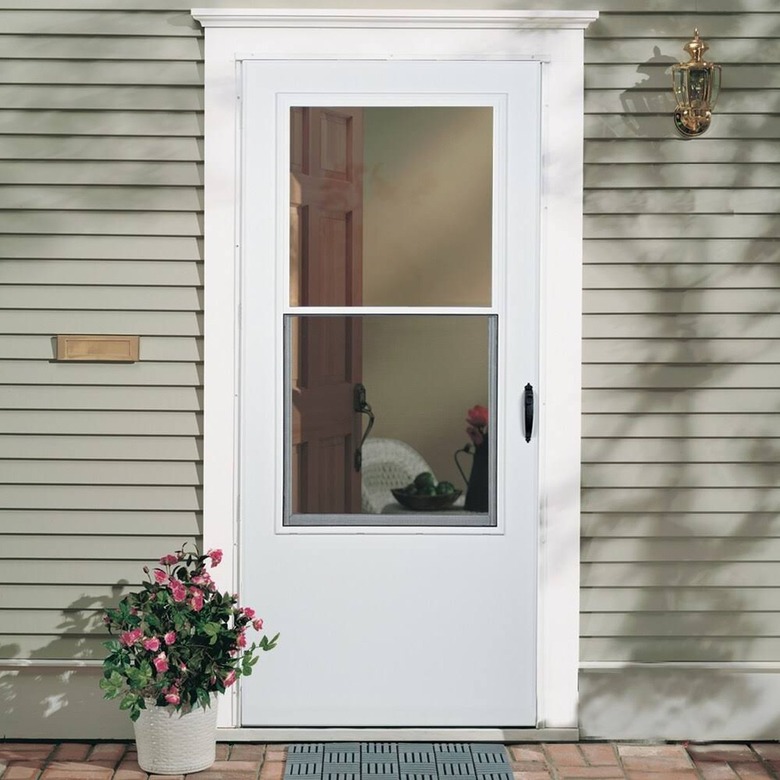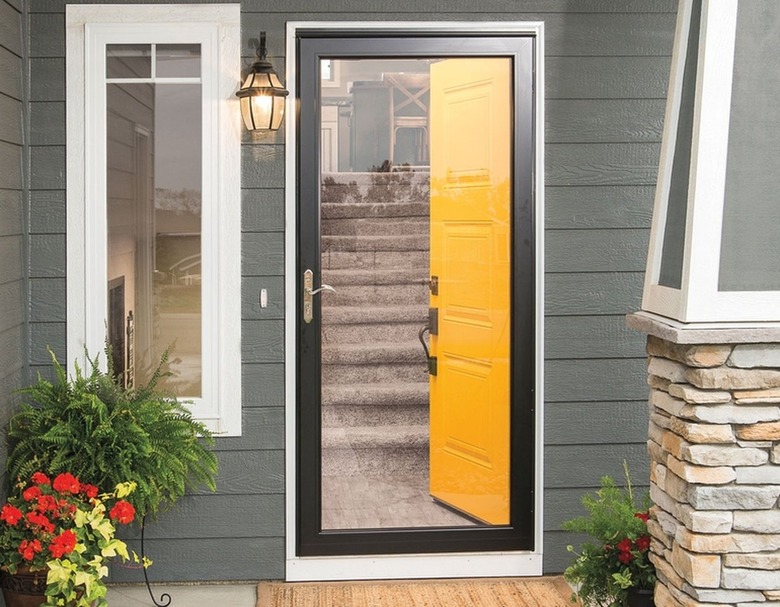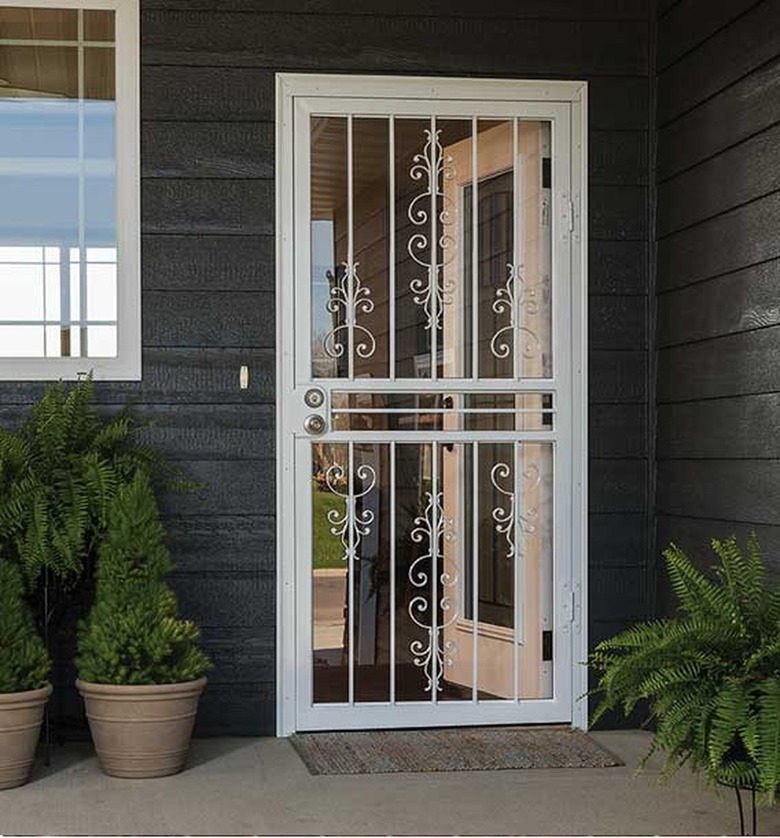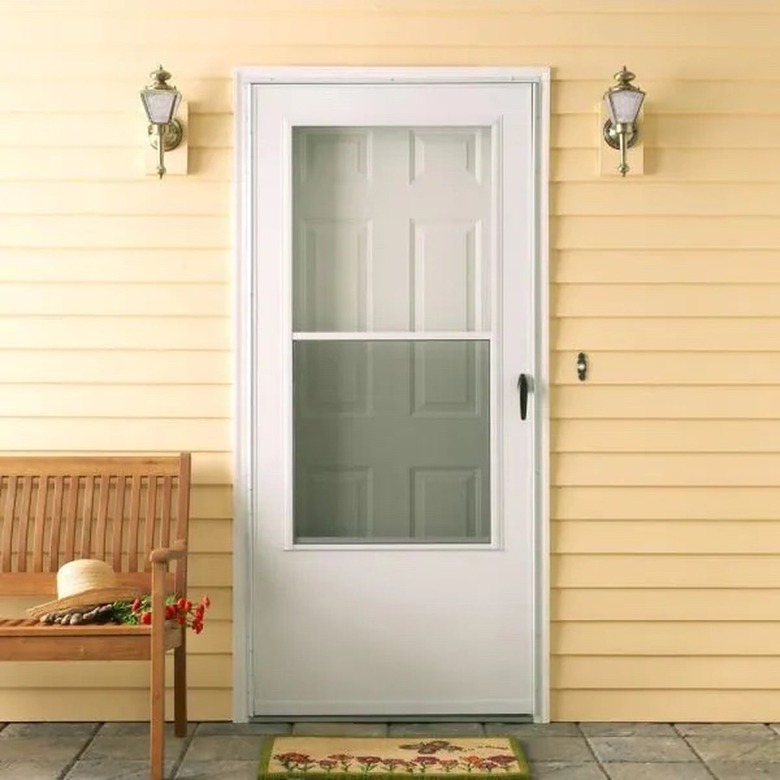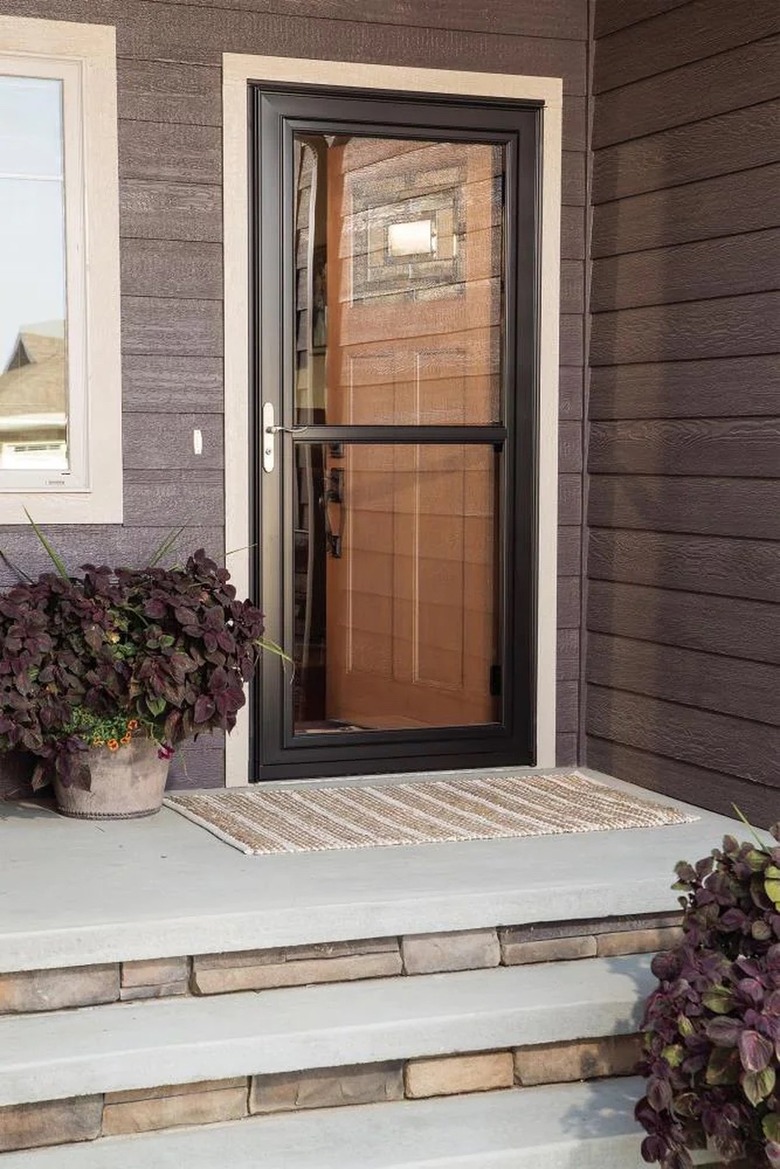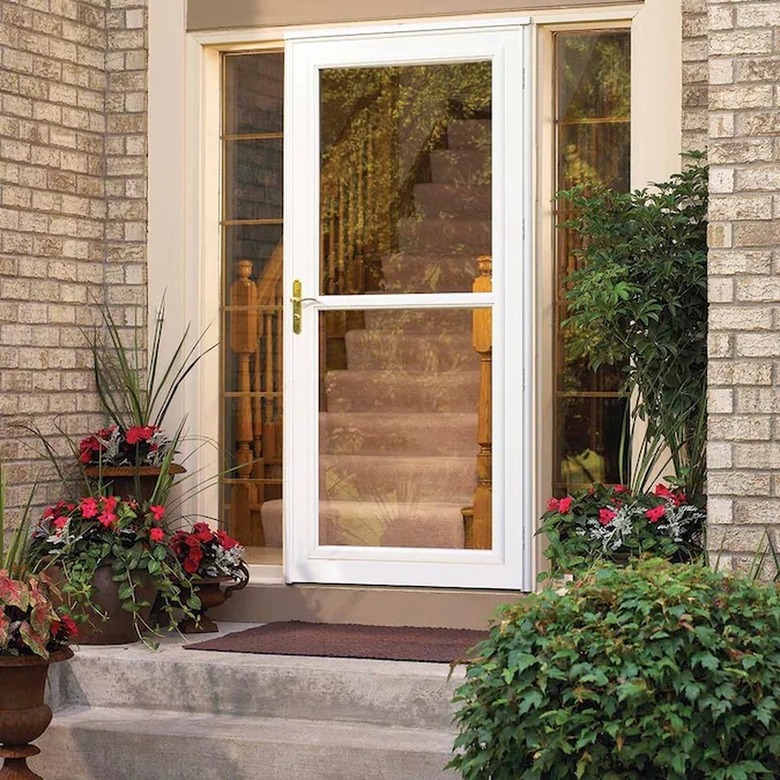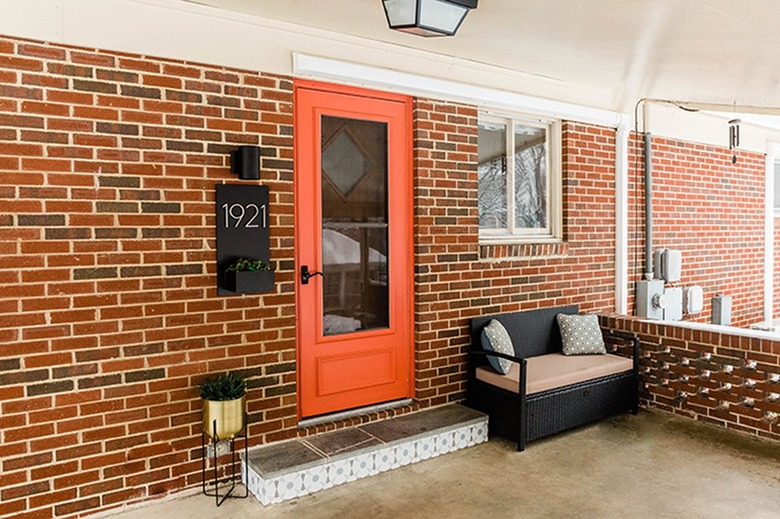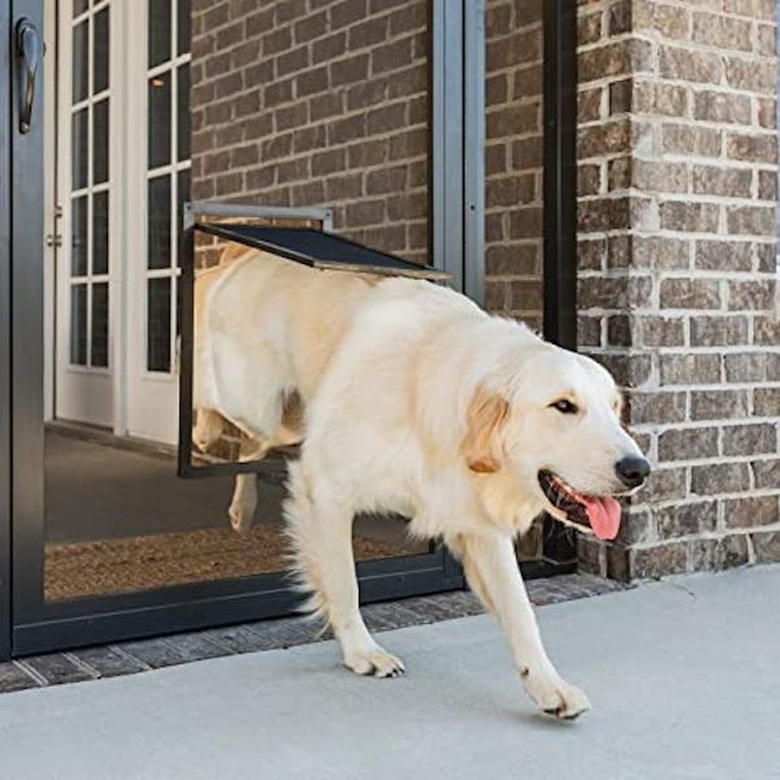7 Major Benefits Of Installing A Storm Door
Storm doors do a great job of keeping the elements off your front door and out of the entry area, but they're more than just weather-protection devices. Locking storm doors add an extra level of security before entry door access. Among several other benefits, they help homeowners with indoor climate control, acting as an additional barrier to block heat or cold during temperature extremes.
On the fence about installing a storm door? Here are seven major benefits to consider.
1. Weather Protection for the Front Door
1. Weather Protection for the Front Door
A storm door protects the front door from the elements. Without a storm door, there's nothing preventing rain, snow, or ice from hitting the front door, and exposure to bad weather wears a door's finish over time, particularly if the door is wood. A storm door both reduces the amount of maintenance required to maintain the front door's finish and helps keep the front door clean since moisture, dirt, and debris can't reach it through the glass panels. Ultimately, the storm door keeps the front door looking its best for years to come.
2. Storm Doors Add Security
2. Storm Doors Add Security
A storm door helps keep the home more secure inside and out. When the storm door is locked, it's one more deterrent for potential burglars. Even if someone happens to find a key to the front door, there's no getting in since the storm door has a different lock.
From the inside, a locked storm door also helps prevent toddlers from pushing the door open and getting outside (even if they've figured out how to open the front door). The same holds true for dogs that have figured out that pushing an exterior door sometimes opens it. If the storm door is locked, there's no way your furry friend can let themselves out.
If you're concerned about break-ins, a security storm door provides extra peace of mind. Some security storm doors have decorative yet sturdy steel bars every few inches so there's no getting through the frame even if the glass or screen are breached. Security storm doors have enhanced features, such as sturdier latches and hinges that are difficult to remove as well as glass that's even more difficult to break than standard door glass.
3. Save on Energy Bills
3. Save on Energy Bills
If your front door isn't insulated, adding a storm door could improve your home's energy efficiency, as it helps keep the temperature indoors moderate even during extremely hot or cold days. With a wood door or another door style that isn't insulated, your home might experience a little heat and air-conditioning loss through and around the door, resulting in slightly higher energy usage.
If you're looking to improve efficiency, a storm door with a low-emissivity, or low-e, coating on the glass is the best option, as it helps reduce heat transfer through the glass on sunny days, preventing a hot air pocket that could end up damaging the front door. With standard glass in a storm door and no screen, if your front door gets more than three hours of direct sunlight each day, heat builds up between the storm door glass and the front door, eventually damaging the front door's coating. While low-e glass minimizes this problem, it also helps reduce energy loss through the door by up to 50 percent. The difference could be noticeable on your energy bill if the rest of your home's exterior has energy-efficient windows and doors.
4. More Natural Light
4. More Natural Light
A storm door offers the opportunity to leave the front door open during nice weather, allowing for more natural light. If it's warm enough to use the screen option in the storm door instead of just glass, the screen also allows fresh air inside without having to open any windows.
Full-view storm doors allow the most natural light with or without the screen, as the entire storm door, save for its outer framework or housing, is glass. By comparison, partial-view storm doors only have glass on part of the door (usually the top half). Partial-view storm doors still allow more light into the home than a home with a closed front door, with the added benefit of a somewhat solid lower surface that may otherwise be dirtied or damaged by pets or young children. No matter which door style you're considering, there's most likely an option for a screen that swaps out or that slides into place, stored within the door itself.
5. Keep Bugs at Bay
5. Keep Bugs at Bay
A storm door is one more barrier between your home and any pesky bugs hanging out near the entrance. Without a storm door, insects could land on the door and easily enter the home once you open it (think June bugs in the summer). If insects land on the storm door, however, there's less chance of them getting indoors, as you'll see them first and can tap on the door, which may scare them away. With a screen door in place, a simple flick on the screen sends away any resting insects.
The storm door also helps prevent insects from crawling in through gaps along the bottom of the front door. They're far less likely to find a gap with a storm door installed, particularly if the storm door fits properly and is closed all the way.
6. Add Color or Style
6. Add Color or Style
New storm doors are no longer just the basic white metal frames that dominated for so many decades. Modern options come in quite a few hues, allowing you to match the door to the accents on your house or to add a pop of color that makes your home's entryway stand out from afar. Some also feature decorative glass etching or embellishments for an added touch of style. A colorful or decorative storm door adds curb appeal and may look even nicer than the front door itself.
7. Specialty Access for Pets
7. Specialty Access for Pets
If you have a pet that enjoys hanging out in the backyard, a specialty storm door near a back or side entry allows your four-legged friend to let themselves out. An option such as the Emco K900 Series Self-Storing Pet Storm Door has a small, flap-covered opening in the lower half of the door for your pet to enter and exit the home plus a security panel to prevent unauthorized access to the pet port overnight. Some pet-access storm doors have every benefit you'd like in a storm door, such as the ability to insert a screen in the top half plus the petproof area on the bottom half of the door around the pet access point.
